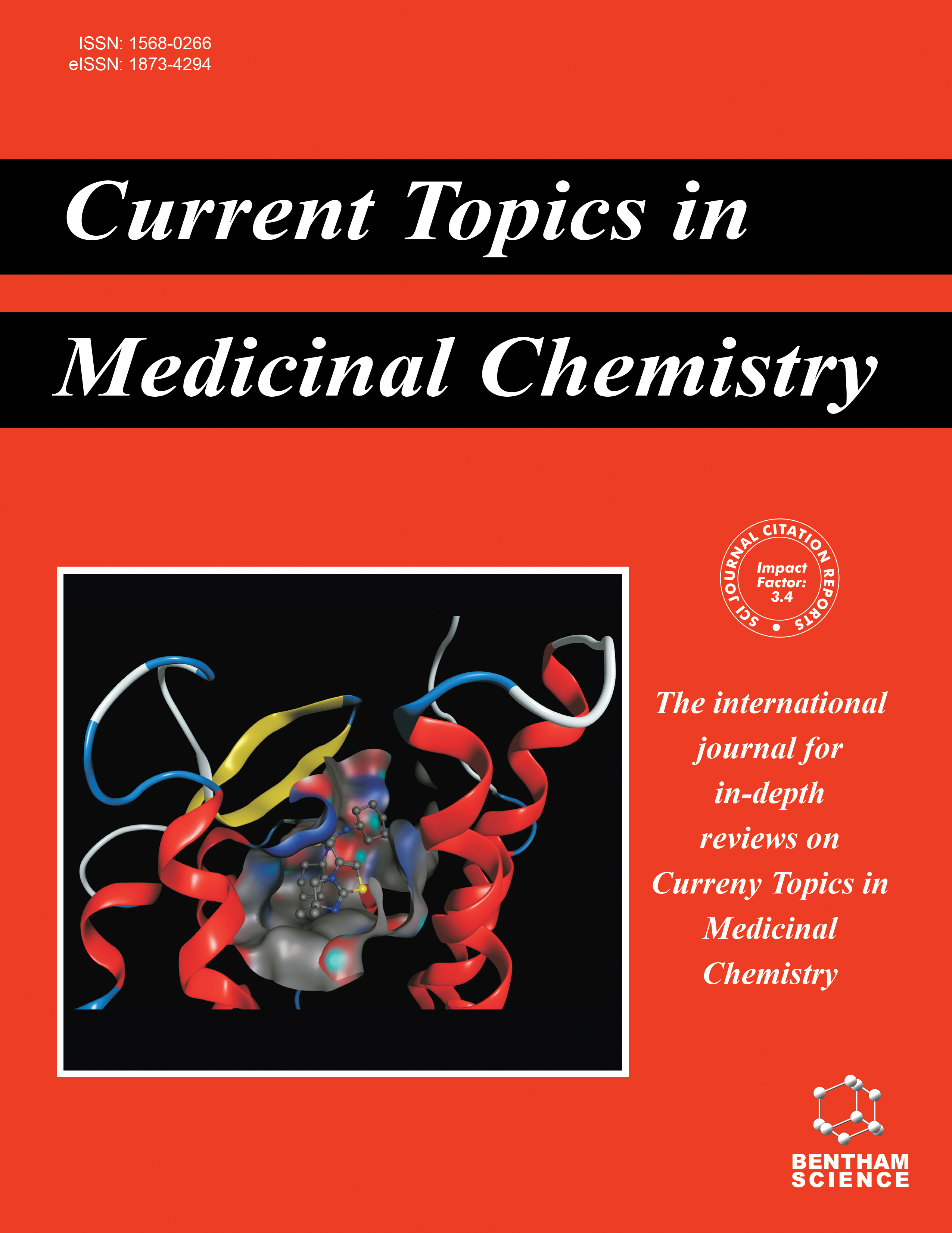- Home
- A-Z Publications
- Current Topics in Medicinal Chemistry
- Previous Issues
- Volume 4, Issue 8, 2004
Current Topics in Medicinal Chemistry - Volume 4, Issue 8, 2004
Volume 4, Issue 8, 2004
-
-
Introduction: P2 Receptors
More LessThe current status of ligand gated ion channel P2X and G protein-coupled P2Y receptor subtypes is described. This is followed by a summary of what is known of the distribution and roles of these receptor subtypes. Potential therapeutic targets of purinoceptors are considered, including those involved in cardiovascular, nervous, respiratory, urinogenital, gastrointestinal, musculo-skeletal and special sensory diseases, as w Read More
-
-
-
Molecular Recognition at Purine and Pyrimidine Nucleotide (P2) Receptors
More LessIn comparison to other classes of cell surface receptors, the medicinal chemistry at P2X (ligand-gated ion channels) and P2Y (G protein-coupled) nucleotide receptors has been relatively slow to develop. Recent effort to design selective agonists and antagonists based on a combination of library screening, empirical modification of known ligands, and rational design have led to the introduction of potent antagonists of the P Read More
-
-
-
Molecular Structure of P2X Receptors
More LessAuthors: Terrance M. Egan, Jane A. Cox and Mark M. VoigtP2X receptors are ligand-gated ion channels that transduce many of the physiological effects of extracellular ATP. There has been a dramatic increase in awareness of these receptors over the past 5 or so years, in great part due to their molecular cloning and characterization. The availability of cDNA clones for the various subunits has led to rapid progress in identifying their tissue-specific expression, resulting in ne Read More
-
-
-
Neuronal P2 Receptors of the Central Nervous System
More LessAuthors: Peter Illes and Joaquim A. RibeiroNeurons of the central nervous system (CNS) are endowed with ATP-sensitive receptors belonging to the P2X (multimeric ligand-gated cationic channels) and P2Y (G protein-coupled 7TM receptors) types. To date seven P2X and eight P2Y receptors of human origin have been molecularly identified and functionally characterized. P2X subunits may occur as homooligomers or as heterooligomeric assemblies of more than on Read More
-
-
-
Partial A1 Adenosine Receptor Agonists from a Molecular Perspective and Their Potential Use as Chronic Ventricular Rate Control Agents During Atrial Fibrillation (AF)
More LessAuthors: Jeff A. Zablocki, Lin Wu, John Shryock and Luiz BelardinelliThis review provides a molecular perspective of partial agonism at the A1 adenosine receptor. The structure-activity relationships (SAR) for affinity and intrinsic efficacy of analogues of the full agonist N6-cyclopentyladenosine (CPA) are emphasized. Both general models of activation of G protein-coupled receptors and specific molecular models of the A1-adenosine receptor are used to interpret the results of efforts to synt Read More
-
-
-
Partial Agonists for A3 Adenosine Receptors
More LessAuthors: Zhan-Guo Gao and Kenneth A. JacobsonSelective agonists for A3 adenosine receptors (ARs) could potentially be therapeutic agents for a variety of disorders, including brain and heart ischemic conditions, while partial agonists may have advantages over full agonists as a result of an increased selectivity of action. A number of structural determinants for A3AR activation have recently been identified, including the N6-benzyl group, methanocarba substitution of r Read More
-
-
-
New Highly Potent and Selective Adenosine A3 Receptor Antagonists
More LessA class of potent, selective adenosine A3 receptor antagonists was obtained via optimisation of the screening hit N-[4-(4-methoxyphenyl)-thiazol-2-yl]-acetamide. Structural modifications of this hit revealed very quickly that a 5-(pyridin-4-yl) substituent on the 2- aminothiazole ring was optimal for high potency at the adenosine A3 receptor. Structure activity relationship studies led to both potent and selective A3 receptor antag Read More
-
Volumes & issues
-
Volume 25 (2025)
-
Volume 24 (2024)
-
Volume 23 (2023)
-
Volume 22 (2022)
-
Volume 21 (2021)
-
Volume 20 (2020)
-
Volume 19 (2019)
-
Volume 18 (2018)
-
Volume 17 (2017)
-
Volume 16 (2016)
-
Volume 15 (2015)
-
Volume 14 (2014)
-
Volume 13 (2013)
-
Volume 12 (2012)
-
Volume 11 (2011)
-
Volume 10 (2010)
-
Volume 9 (2009)
-
Volume 8 (2008)
-
Volume 7 (2007)
-
Volume 6 (2006)
-
Volume 5 (2005)
-
Volume 4 (2004)
-
Volume 3 (2003)
-
Volume 2 (2002)
-
Volume 1 (2001)
Most Read This Month
Article
content/journals/ctmc
Journal
10
5
false
en


